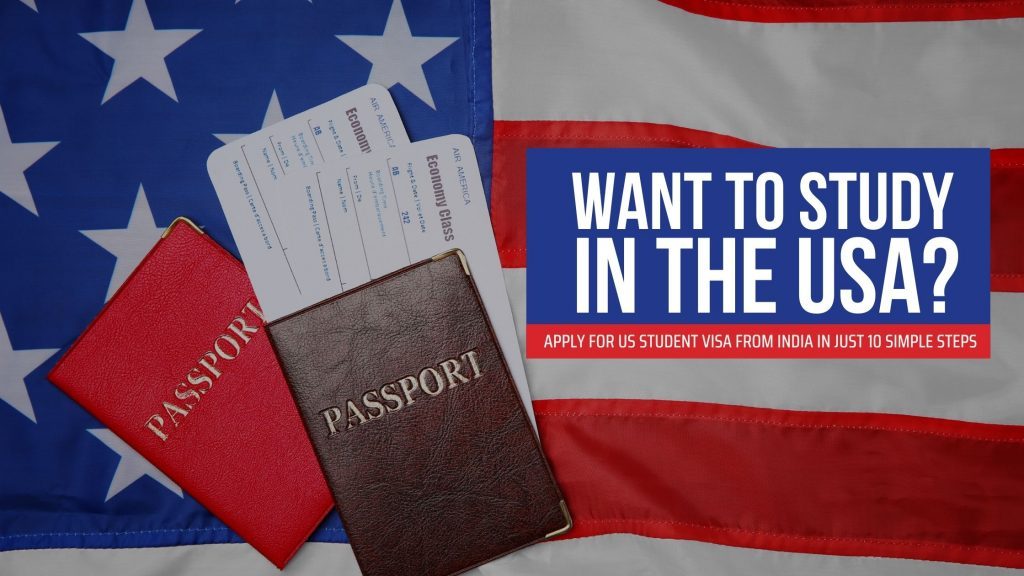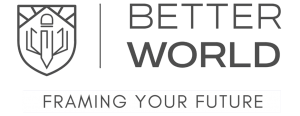Why Toronto is the Best Place to Study in Canada in 2022?
May 19, 2022Cost of Living in USA for Indian Students 2022
May 21, 2022A comprehensive guide on USA student visas updated for the year 2022: Types, Cost, Requirement, and How to Apply?

The United States of America continues to remain the top choice for international students. If you are one of the select few who wishes to study in the United States and have already been accepted, the next important phase is to apply for a Student Visa.
International students who want to study full-time in the United States for a Bachelor’s, Master’s, or doctoral degree must apply for a student visa. The sort of visa you’ll require is determined by your course of study and the type of school you plan to attend. You’ll need to engage with educational counselors to figure out how to get the right visa.
This US student visa Guide explores the various types of visas quickly and strives to provide information on how to apply for a US student visa from India, which is suitable for students pursuing bachelor’s and master’s degrees in the United States, and brief information on other types of visa.
Types of US Student Visa
Anyone planning to study in the United States may be granted one of the three international student visa types: F1 Visa, J1 Visa, or M1 Visa. “What visa do you need to work as an international student in the United States?” you might wonder. The F1 and J1 visas provide work opportunities but do not guarantee them. The M1 Visa, on the other hand, does not allow for employment. We’ve broken down each of these three types of foreign student visas so you can understand how they will affect your life in the United States.
F1 Student Visa
The “F” visa is intended for academic purposes. Students enrolled in an academic program or an English language program are granted an F1 visa. In the United States, F1 visas are by far the most frequent type of international student visa. F1 students must maintain a full-time course load to maintain their designation. A part-time on-campus job is possible with F1 status (fewer than 20 hours per week). Students can also work on optional practical training (OPT) for up to a year after finishing their academic degrees.
Additional Information
- An F1 visa is required for students seeking programs that require more than 18 hours of study per week. This applies to all undergraduate programs as well as graduate programs such as MS, MBA, and other similar degrees.
- F-2 visas are issued to spouses or children accompanying F-1 visa holders. Note that spouses are not permitted to work, but they may accompany and/or seek for their own visa to work or study in the United States.
J1 Student Visa
Students who need practical training that is not accessible in their home country to finish their academic program are granted a J1 visa. As long as the exchange visitor program sponsor gives authorization, J-1 student status allows for similar employment as the F1 visa, with identical restrictions.
Additional information
- Students, visiting scholars, and lecturers undertaking an exchange program are eligible for the J-1 Exchange Visitor Visa. Fulbright scholars and many Indian students on short-term study abroad programs, for example, will travel to the United States on a J-1 visa.
- The J1 visa is typically requested by a working professional who is visiting America on an exchange program, hence the name Exchange Visitor Visa. This might be a 10-month vocational training program or a research fellowship, for example. In either instance, the candidates will get a notification from the appropriate institutions.
- J-2 Visas are issued to spouses or children accompanying J-1 Visa holders. Please note that spouses can work if permission is granted ahead of time.
M1 Student Visa
A student who wishes to attend a non-academic or vocational school is granted an M1 student visa. M-1 visa holders enrolled in technical or vocational programs are prohibited from working throughout their education. M-1 student visa applicants must show that they have sufficient finances to cover all tuition and living expenses for the duration of their proposed stay.
The M1 visa is a sort of student visa that is only available to students attending vocational and technical schools. While the application process for both the F1 and M-1 visas is similar, the M1 visas are time-stamped upon entry, and students cannot overstay their stay.
Read Also: Australia Student Visa News(2022): How it’s going to Affect Students in Australia?
US Student Visa Requirements (F-1 Visa)
For your US Student Visa application to US universities, you will typically require the following:
- A valid passport that is valid for at least six months beyond the duration of your visit.
- A recent passport-size photograph is required.
- DS-160 confirmation page Form I -20.
- Payment of SEVIS application fees.
- Non-immigrant visa application
- If there are any additional criteria, your university will notify you before you submit your application.
How to Apply for US Student Visa from India?
Step 1: Apply to and be admitted to a US school.
The first step is to apply to (and be accepted to) a university in the United States. Most full-time undergraduate and graduate schools in the United States need applications by December or January of each year. In March and April, admission notices are typically sent out.
Step 2: Obtain Form I-20 or DS-2019 from your school.
You’ll receive one of two forms after being admitted to a school: Form I-20 (Certificate of Eligibility for Nonimmigrant Student Status) for F-1 and M-1 students, and Form DS-2019 (Certificate of Eligibility for Exchange Visitor (J-1) Status for J-1 students.
Step 3: Pay the I-901 SEVIS charge.
Once you obtain your I-20 or DS-2019 paperwork from your school, go online and pay the I-901 SEVIS cost. Once again, the cost is 350 USD for F-1/M-1 students and 220 USD for J-1 students. (Those on J-1 visas for a limited time will just have to pay $35 USD.)
Step 4: Find a US Consulate or Embassy in Your Area
You must apply for an international student visa at the nearest American Embassy or consulate (ideally, in the city or region in which you live). An online search for US embassies and consulates is available through the US Department of State.
Step 5: Complete the DS-160 online form.
Fill out the Online Nonimmigrant Visa Application after that (Form DS-160). On this application, you will also select the US embassy where you will interview for your visa.
Step 6: Schedule an interview for your visa.
After you’ve submitted Form DS-160, contact the nearest US embassy or consulate (ideally the one you listed on your online application) to schedule your visa interview.
Step 7: Pay the application fee for your visa.
After that, pay the 160 USD application cost. Regardless of where you apply or where you are from, you will be charged the same fee. It’s crucial to note that depending on your embassy, the actual day you pay this tax will vary.
Step 8: Attend your visa interview
The final important step in the visa application procedure is the interview. This interview will determine whether you receive a student visa to study in the United States.
Step 9: Pay the visa issuance cost
Certain students must pay a visa issuance fee after being approved for a student visa in the United States. Your nationality and the reciprocity agreement your country has with the US will determine whether or not you must pay this cost. You can check if you have to pay a visa issuance fee using a chart on the US visas website.
Step 10: Obtain your visa
If you’ve met all of the above requirements and been granted an international student visa to the United States, your embassy will return your passport to you with your new visa inside. It’s worth mentioning that certain embassies will require you to pick it up in person, while others may simply return it to you via mail.
The time it takes for your visa to be processed varies depending on the embassy.
Documents Required for F1 Student Visa Application
.Student visas in the United States demand more documentation than tourist visas. You’ll need the required paperwork, as well as financial and academic records to back them up. Before heading to the consulate for the visa interview, make sure to go through this checklist.
- A valid passport with a validity date at least six months beyond your period of stay.
- A printed copy of DS-160, the online application form
- SEVIS Fee Receipt
- Interview appointment letter (original and copy)
- Form I-20 sent by the college (where you are going to study)
- Visa fees payment confirmation receipt
- Bank statement for at least three years showing that you have enough assets to pay for the first year (could be of parent or guardian)
- Pay/salary slips
- Original mark sheets/provisional certificates
- Score sheet of exams like TOEFL, GMAT, IELTS, etc.
Visa cost for USA Student visa
An application visa cost of US$160 is required for applicants from outside the United States (do check the latest fee when applying or contact an overseas education facilitator).
There is now a SEVIS fee of US$350 for F and M visa applications and US$220 for most J visa applications, which covers the cost of the computer system that tracks your time in the US (SEVIS).
Scholarships to Study in the USA
You can also apply for several scholarships available at the institute/university you are applying to if you are a deserving student. There are numerous scholarships available for study in the United States. Scholarships are one of the most effective ways to fund your education. While intending to pursue their studies abroad, international students are concerned about managing their finances. Scholarships are also available from numerous universities and institutes. It might be based on necessity or merit.
You can always consult us for a free consultation, as our experts will guide you through the whole process and make your study abroad journey a hassle free-one.



